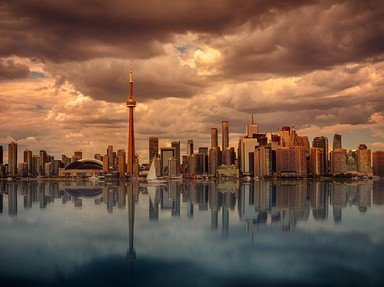Quiz Answer Key and Fun Facts
1. When two ships collided in Halifax Harbour, Nova Scotia in December 1917, this caused the largest man-made explosion until the atomic weapon blasts in the 1940s. One ship carried explosives. Surprisingly, what was the other carrying?
2. No-one's green with envy about Phoenix in Boundary Country of British Columbia, Canada, because it is a ghost town. What mineral once saw it a thriving city in its heyday?
3. The Cave and Basin Hot Springs, located in Sulphur Mountain in Alberta, Canada, were first exploited for monetary gain in the latter part of the 1800s. What was the occupation of the men who robbed their fellow-labourers blind for the opportunity to soak their weary limbs?
4. Hell's Gate in British Columbia got its name from the journal of an explorer named Simon Fraser. What geological feature is it?
5. The Dragon's Tongue blocks the Clearwater River and forms Clearwater Lake in British Columbia. What does the name Dragon's Tongue imply was the likely cause of this blockage?
6. In 1825, a huge fire that became known as the "Miramichi Fire" occurred in New Brunswick. What type of fire was it?
7. Calgary is a hot spot for winter sports. Which National Hockey League (NHL) franchise started heating up the competition when they relocated there in 1980?
8. What was being debated in the House of Commons when the Centre Block of the parliament buildings of Canada were destroyed by fire in February 1916?
9. You may not find any Hungarian Horntails here, but you will find the Red Bluff First Nation. Which locality in British Columbia, Canada plays host to their Indian Reserve No. 3?
10. The "Hot Zone" near Windsor, Ontario was so called because of a tragic event that occurred there in 1999. What was the event?
Source: Author
JCSon
This quiz was reviewed by FunTrivia editor
agony before going online.
Any errors found in FunTrivia content are routinely corrected through our feedback system.
